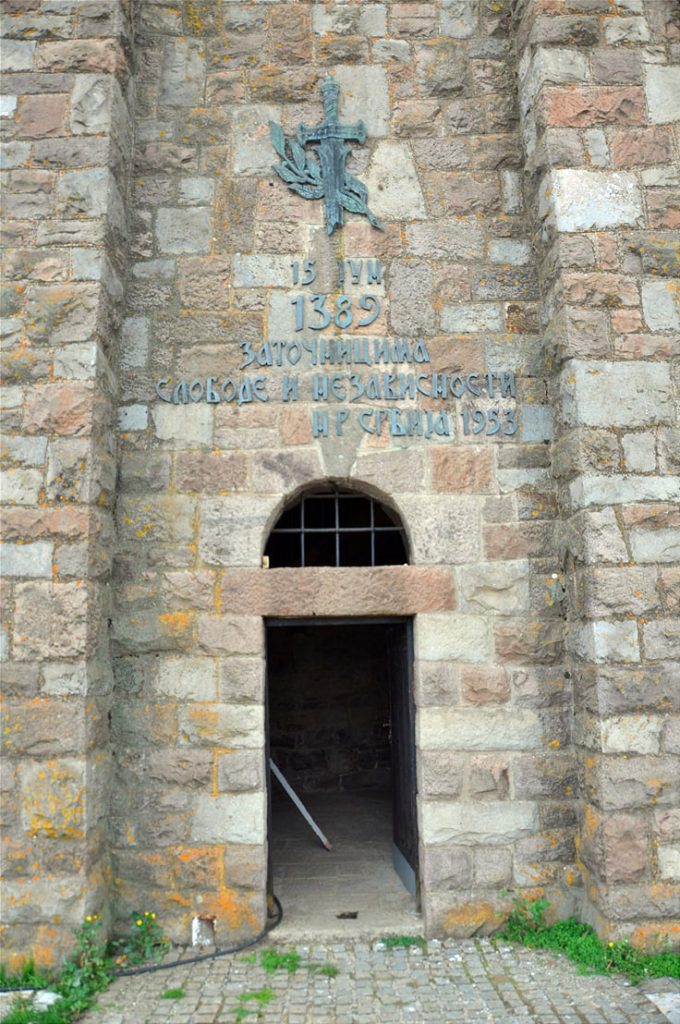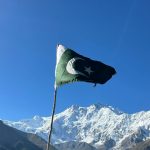by Andy Khong
The word “Kosovo” is derived from the Serbian word “kos,” meaning “blackbird,” and “ovo,” meaning “field”. It is often translated as the “Field of Blackbirds” in reference to the historical Battle of Kosovo Polje fought on this plain in 1389.
The Field of Blackbirds, or Kosovo Polje in Serbian, is an expanse of land nestled within the heart of the Balkans, where history weaves a complex narrative of identity, struggle, and geopolitics. This vast plain, situated in modern-day Kosovo, holds profound significance for the Serbian people and serves as a symbol of the intricate challenges faced by the region.
The Battle of Kosovo Polje (1389)
At the heart of Kosovo‘s historical tapestry lies the legendary Battle of Kosovo Polje, fought on 28th June, 1389. This battle, often referred to simply as the Battle of Kosovo, stands as an emblematic moment in Serbian history. It pitted a force comprised of all Balkan people (such as Albanians, Bosnians, Serbians, and other ethnic groups) led by Prince Lazar Hrebeljanović, against the Ottoman Turks led by Sultan Murad 1 and his sons Bayezid 1 and Yakub Celebi. The battle ended inconclusively, with both leaders losing their lives. This event marked the beginning of Ottoman dominance in the Balkans and is seen as a symbol of Serbian resistance against the Ottoman Empire.
Historical accounts vary as to the circumstances of Sultan Murad 1’s death, and there are multiple theories and legends surrounding his demise. One of the most well-known versions of the story involves a Serbian nobleman named Miloš Obilić. According to this account, during the Battle of Kosovo in 1389, Miloš Obilić pretended to be a deserter, gained the trust of the Ottoman camp, and approached Sultan Murad 1. He then reportedly assassinated the sultan in a surprise attack.
Sultan Murad 1 was initially buried in Kosovo, but his remains were later exhumed and reburied in Bursa, Turkey.
Bayezid 1 upon ascending the throne after his father’s (Sultan Murad 1) death had his brother Yakub Celebi strangled to prevent any future plots to the throne.
Prince Lazar Hrebeljanović was injured and taken captive during battle by the Ottomans. Some historical accounts claim that he was killed in captivity, while others suggest that he may have been executed by the Ottomans after the battle.





The Ottoman Advance and Kosovo’s Significance
The Battle of Kosovo Polje holds pivotal importance in understanding the Ottoman Empire’s push into Europe. While the Ottomans did not secure an outright victory, the battle thwarted their advance and established a pattern of conflict that persisted for centuries. The Serbian people, fortified by their identity and history, presented formidable resistance to Ottoman rule.
When the Ottomans settled in Kosovo after the Battle of Kosovo Polje, most Serbians moved north to avoid being ruled by the Ottoman Empire; while Albanians moved into the empty land of Kosovo. The Ottoman Empire implemented a tax system in the Balkans known as the jizya, which was a tax imposed on non-Muslims living under Islamic rule. Most Albanians converted to Islam under Ottoman rule for pragmatic reasons, as converting to Islam could exempt them from certain taxes and provide opportunities for advancement within the Ottoman administrative and military systems.

The Serbian Struggle Against the Ottomans
Serbia’s resistance to Ottoman dominion unfolded through a series of uprisings, notably the First Serbian Uprising (1804-1813) and the Second Serbian Uprising (1815-1817). These revolts eventually led to the recognition of Serbia as an autonomous principality within the Ottoman Empire. These struggles underscored the unwavering Serbian determination for independence and the preservation of their cultural and religious heritage, deeply rooted in Orthodox Christianity.
Territorial Integrity and Kosovo’s Role
Kosovo, historically an integral part of Serbia, emerged as a region of immense cultural and religious importance. Its landscape is adorned with Orthodox Christian monasteries and churches, serving as a testament to Kosovo’s status as a spiritual heartland for the Serbian people. The desire to maintain Kosovo’s territorial integrity remains a central tenet of Serbian national identity.
Ethnic Conflicts and Ethnic Cleansing
Tensions in Kosovo escalated during the 20th century, culminating in ethnic conflicts. The late 1990s bore witness to a period of intense violence, marked by accusations of ethnic cleansing on both sides. Serbians contended that Kosovo, as part of their historical nation, faced violence and intimidation from ethnic Albanians.
Slobodan Milosevic, the former President of Serbia and later Yugoslavia, made a significant speech at the Gazimestan Monument on 28th June 1989. This speech was delivered on the 600th anniversary of the Battle of Kosovo and was seen by many as an attempt to rile up Serbian nationalism. Milosevic’s speech emphasized the historical and emotional significance of Kosovo to Serbians, and it contributed to the growing tensions between Serbian and Albanian communities in the region.
NATO Intervention and Kosovo’s Independence
In response to the escalating turmoil, NATO forces, under the leadership of the United States and President Bill Clinton, initiated a military intervention in Kosovo in 1999. The intervention aimed to protect the Albanian population and enforce a ceasefire. Subsequently, Kosovo transitioned into an international protectorate. In 2008, Kosovo declared its independence from Serbia, a move that continues to spark controversy in international diplomacy.
The Unresolved Status of Kosovo
Kosovo’s final status remains a contentious issue in global politics. While numerous countries (>100), including the United States and many European nations, recognize Kosovo as an independent state, Serbia and several others, notably Russia and China, do not acknowledge its sovereignty. This on-going dispute impedes Kosovo’s path to full UN membership and underscores the intricate geopolitics of the Balkans.
Gazimestan Memorial
The Gazimestan Monument is located on the historic battlefield of Kosovo Polje, near the capital Priština in modern-day Kosovo. The monument was built in 1953 during the period of Yugoslavia under the leadership of Marshal Josip Broz Tito. It was designed by architect Bogdan Bogdanović and constructed to commemorate the 600th anniversary of the Battle of Kosovo Polje.
The Gazimestan Monument is an imposing structure featuring a massive stone tower and an open-air platform. The tower is adorned with mosaic art and inscriptions that convey historical and patriotic themes. The monument is highly symbolic and serves as a tribute to the bravery and sacrifice of those who fought in the Battle of Kosovo Polje.
Present Day
The Field of Blackbirds, Kosovo Polje, stands as a testament to the enduring power of history and identity in shaping the destinies of nations. The Battle of Kosovo Polje symbolizes the resilience of the Serbian people against the Ottoman Empire, while the unresolved question of Kosovo’s status serves as a reminder that the past continues to cast its shadow on the present. Kosovo’s complex history paints a vivid portrait of a region at the crossroads of East and West, where the echoes of the past reverberate through the ever-evolving geopolitics of Europe.
Read about all the Balkan countries:
Albania
Kosovo
North Macedonia
Serbia
Montenegro
Bosnia & Herzegovina
Croatia
Slovenia
Ultimate Yugoslavia Tour: (17-27 May 2024)
Ultimate Yugoslavia Tour: Tito’s Winter (2-13 December 2024)





